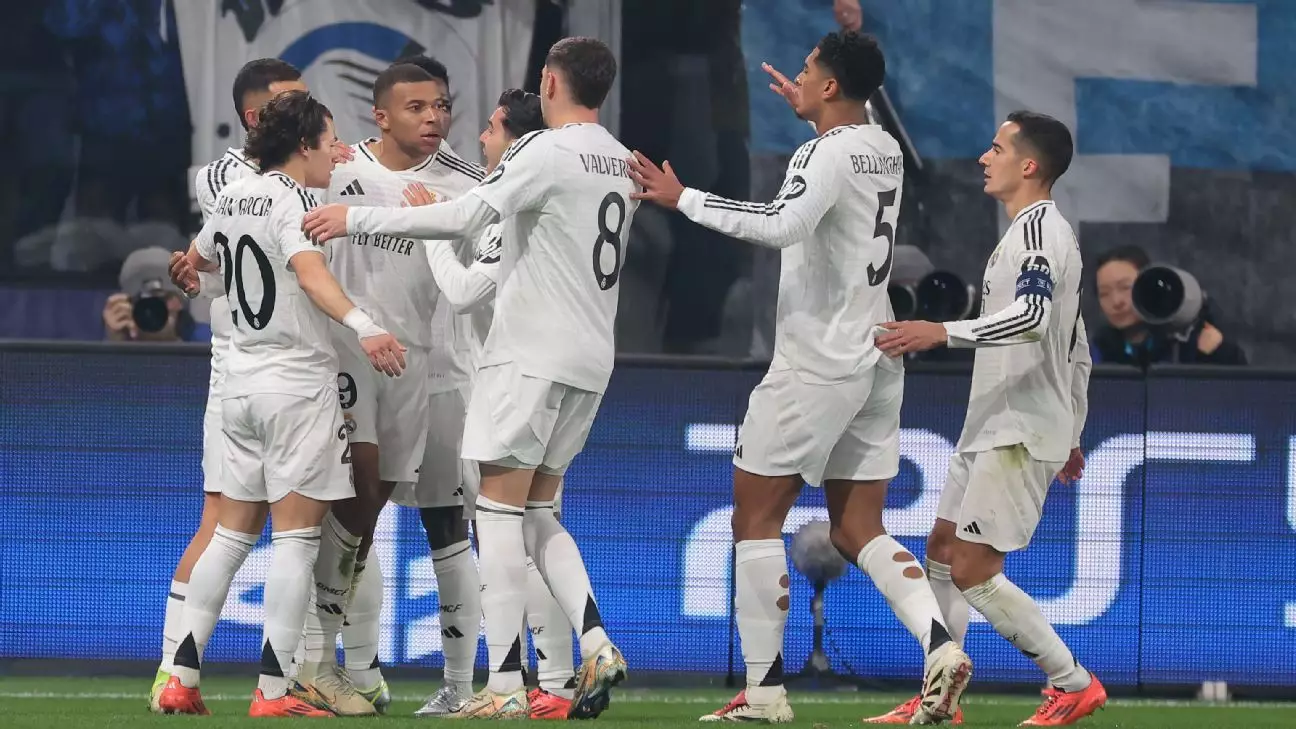The footballing world has witnessed the ebb and flow of Real Madrid’s fortunes in recent weeks, marked by both resounding victories and glaring challenges. Following a 3-0 triumph against Girona, manager Carlo Ancelotti asserted that the team was “back”. Yet, the reality is far more complex. While they emerged victorious in a tightly contested Champions League match against Atalanta, the performance revealed numerous shortcomings that detracted from the posturing of resurgence proclaimed by Ancelotti. The absence of Kylian Mbappé due to an early injury only underscores the precariousness of this Madrid side.
The match against Atalanta indeed showcased Madrid’s potential, highlighted by an array of star names contributing to the scoreboard. However, it simultaneously magnified the vulnerabilities that persist beneath their polished surface. Such dichotomies in performance have led many to question whether the team is, in truth, a cohesive unit or merely a collection of individual talents.
The Star Power vs. Structural Deficiencies
A notable aspect of Madrid’s identity lies in its star power: figures like Vinícius Júnior, Jude Bellingham, and, of course, Mbappé possess the innate ability to sway matches. Their individual brilliance can captivate and secure wins, yet this reliance on sporadic magic raises concerns about the team’s overall structure. The aforementioned bout against Atalanta illustrated how, when forced to adapt to intense opposition, players like Dani Ceballos falter, particularly under pressure. His inadequacy as a playmaker is alarming and signals the need for a strategic rethink.
Similarly, Lucas Vázquez’s limitations in one-on-one situations became painfully evident against a dynamic opponent such as Ademola Lookman. Furthermore, the tendency of Madrid’s attacking stars to gravitate towards the left side of the pitch raises questions about positional discipline. While creativity and fluidity are essential in modern football, the lack of organization can often lead to a stifling of opportunities, as evidenced by the disjointed attempts to maintain spacing.
Nevertheless, Madrid’s grit cannot be understated. Even in moments of a lackluster exhibition, a gritty attitude emerged through clutch performances—be it Vázquez consuming vital minutes in stoppage time or Bellingham’s indefatigable spirit on the field. This inherent mentality of grinding out results is a defining characteristic of the club, allowing them to flourish even when the tactical approach appears flawed.
Atalanta, on the other hand, embodies a contrasting ethos. They present a thrilling, fearless style of play that can dismantle more established teams with ease—Madrid included. Coach Gian Piero Gasperini, oftentimes perceived as an unassuming figure, has cultivated a vibrant squad comprising players overlooked by other clubs, skillfully molding them into a coherent unit that embodies defensive rigidity and explosive offensive capabilities.
Their ability to press in a man-to-man style compounds Real Madrid’s issues. Atalanta’s system, rich with high-energy intensity, provided a formidable challenge, compelling Madrid to adapt rapidly. Gasperini’s approach taps into the raw potential of players often considered raw talents, evident in the emergence of characters like Lookman and Charles De Ketelaere, who proved to be invaluable cogs in the Atalanta machine.
Such contrasts in coaching philosophy underline the larger narrative within European football—while Madrid leans on star-studded avatars to achieve results, Atalanta exemplifies the power of effective teamwork born from keen tactical planning and player development.
As Madrid grapples with injuries and inconsistency, a structural overhaul might be in order. The current approach, which relies heavily on individual brilliance, is not sustainable. The transient nature of star players’ availability places immense pressure on remaining squad members, necessitating a renewed focus on balance and collective synergy.
This journey towards improvement will not be without obstacles. With stiffer competition in Europe, Ancelotti must navigate through not only nurturing star talent but fostering a system where players can thrive independently yet cohesively. The road ahead demands that Madrid embraces aspects of resilience showcased by Atalanta, emphasizing a more streamlined identity while maximizing its indelible flair.
Real Madrid’s identity in contemporary football oscillates between glamor and grit. While flashes of brilliance can steal games, a thorough overhaul is essential if they are to define themselves as a true unit rather than a collage of talent striving for glory. The beauty of football lies in this journey of development and discovery, and for Madrid, embracing both their strengths and weaknesses will prove vital as they march forward.

